Excited to announce our adoption of Agile A3 report to maintain a concise and visual record of decisions and key resolutions related to problem-solving.
Let’s delve into the problem-solving methodology, explore the roots of the A3 report, and see how Agile can enhance this powerful tool.
Embracing an Agile mindset in conjunction with Lean principles, we’re enhancing our problem-solving methodology to establish a visual reporting for Problem-Solving, rooted in iterative and collaborative practices, aligns seamlessly with Lean principles, promising efficiency, and continuous improvement.
Problem-Solving, what is it?
Problem-solving is a cognitive process that involves finding solutions to difficulties or challenges. It is a critical skill in various aspects of life, including personal, professional, and academic domains.
The Agile A3 report
The A3 report is a methodology widely used in lean management to maintain a concise and visual record of decisions and key resolutions related to problem-solving.
Derived from the standard paper size (A3), this structured document serves as a one-page summary that encapsulates the entire problem-solving process.
The primary objective of the A3 report is to provide a quick and comprehensive overview, allowing stakeholders to grasp the essence of a problem, its analysis, and the proposed solutions at a glance. This visual representation fosters effective communication and collaboration among team members and management.
Typically, an A3 report includes sections such as problem identification, current state analysis, root cause analysis, proposed solutions, an action plan, and a follow-up plan. By condensing complex information into a single page, the A3 report promotes clarity and facilitates informed decision-making.
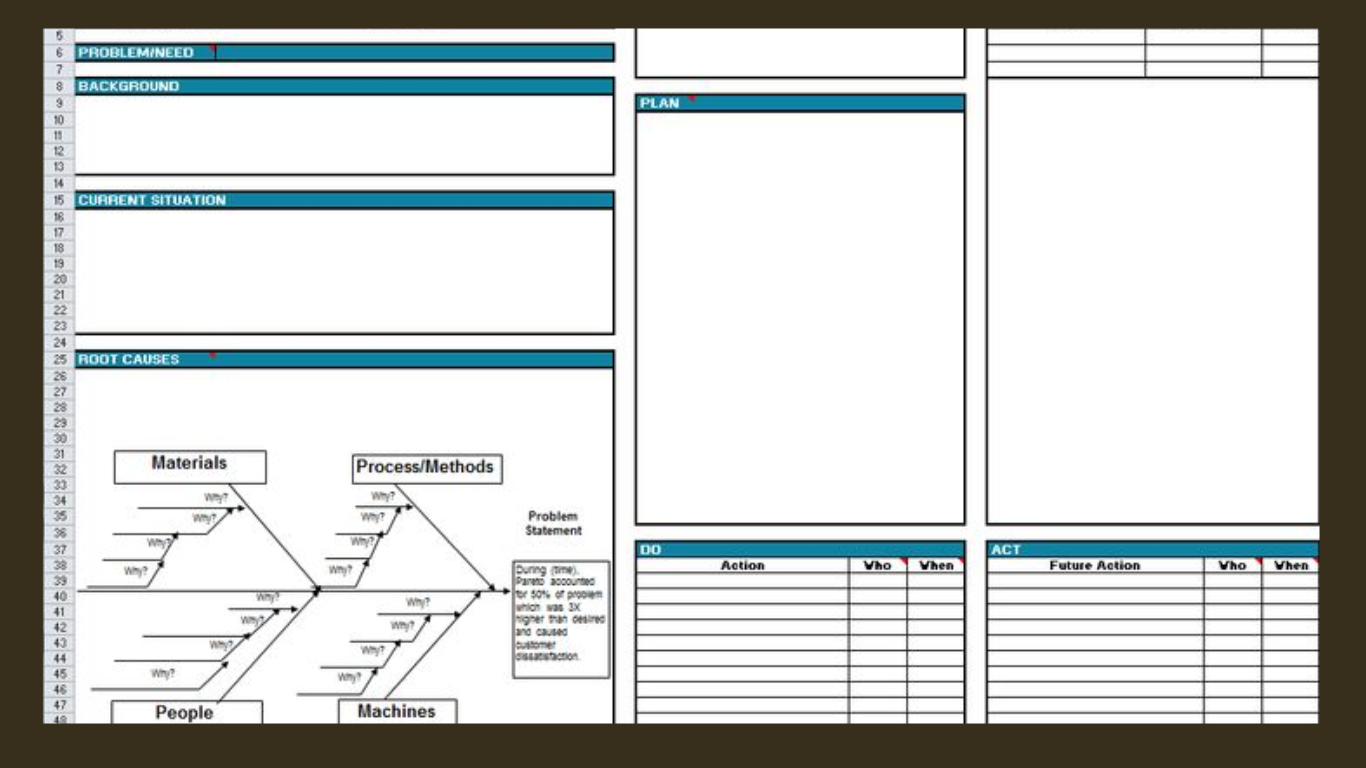
In essence, the A3 report acts as a visual roadmap, guiding teams through the stages of problem-solving and ensuring that everyone involved is aligned with the goals and actions required to address the issue at hand. This approach has proven to be a valuable tool in various industries, promoting transparency, accountability, and continuous improvement within organizations.
Our approach to problem-solving integrates Agile methodologies, emphasizing iterative cycles, adaptability, and customer-centric solutions.
By breaking down complex issues into manageable iterations, we ensure continuous feedback and improvement throughout the problem-solving process.
- Integration of Agile A3 report: Integrating Agile practices into A3 visual report introduces flexibility, collaboration, and responsiveness to evolving requirements. Agile ceremonies like daily stand-ups and retrospectives seamlessly blend with A3 iterations, creating a dynamic problem-solving environment.
- Iterations in A3 Problem Solving: Treat each section of the A3 report as an iteration, aligning with Agile’s iterative development model. This breakdown allows for continuous inspection and adaptation, fostering agility in problem resolution.
- Scrum Master as A3 Facilitator: Designating a Scrum Master or Agile Coach as the A3 facilitator ensures Agile principles are embedded in the problem-solving process. This role promotes collaboration, guides the team through iterations, and ensures alignment with Agile values.
- User Stories in A3 Sections: Map A3 sections to Agile user stories for clarity and alignment. Define the problem as the epic, current and desired states as user stories, and actions as tasks. This user story approach enhances transparency and integrates seamlessly with Agile practices.
- Agile Tools for A3: Leveraging Agile tools like Kanban boards or digital boards enhances visual tracking of A3 iterations. These tools provide transparency into problem resolution status, facilitating collaboration and ensuring everyone is on the same page.
- Daily Stand-ups for A3 Progress: Introducing daily stand-up meetings ensures regular communication, allowing team members to share insights, address impediments, and maintain alignment with Agile’s daily stand-up ceremonies.
- Retrospectives for Continuous Improvement: Conducting retrospectives at the end of each A3 iteration mirrors Agile practices, fostering a culture of continuous improvement. This reflection allows the team to identify successes and areas for enhancement, promoting an adaptive problem-solving environment.
- Problem-Solving Roots and A3 Origin: The A3 methodology originated at Toyota, deeply ingrained in their problem-solving culture. Named after the A3-sized paper it traditionally used, it serves as a visual and structured tool for resolving issues, aligning with Lean principles for efficiency and waste reduction.
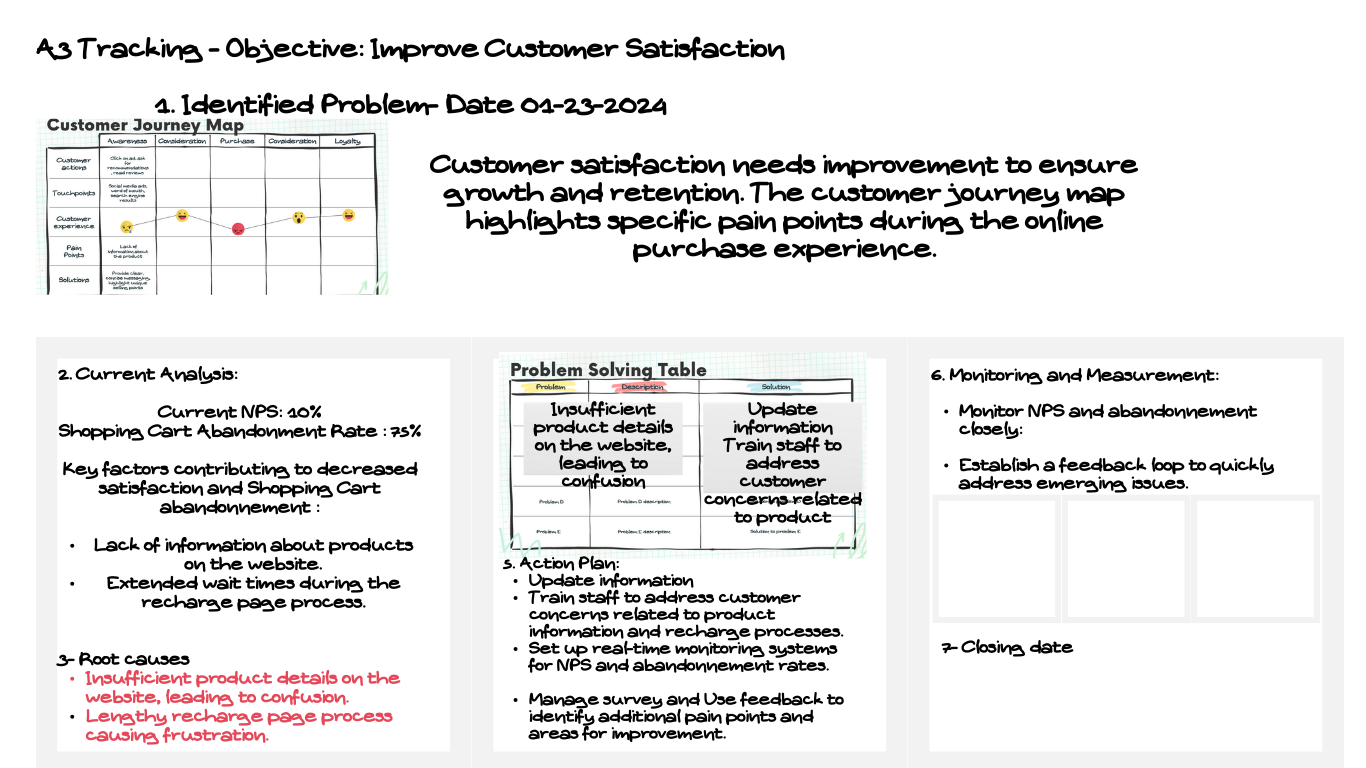
Conclusion: By merging Agile A3 Problem Solving with Lean Principles, we’re charting a course towards dynamic and efficient website problem resolution. This approach not only pays homage to the roots of A3 at Toyota but also propels us into a future of collaborative, iterative, and customer-focused problem-solving.
Let’s embark on this journey, combining the best of Agile and Lean methodologies to navigate and conquer challenges on our website.
To know more about Lean and continuous improvment
Click the red button “the System Lean” on the right
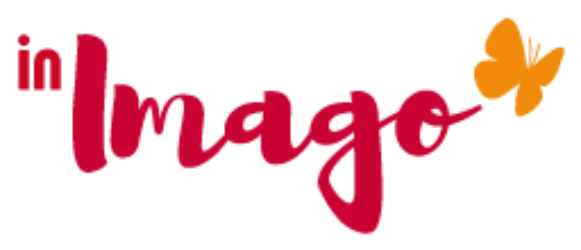
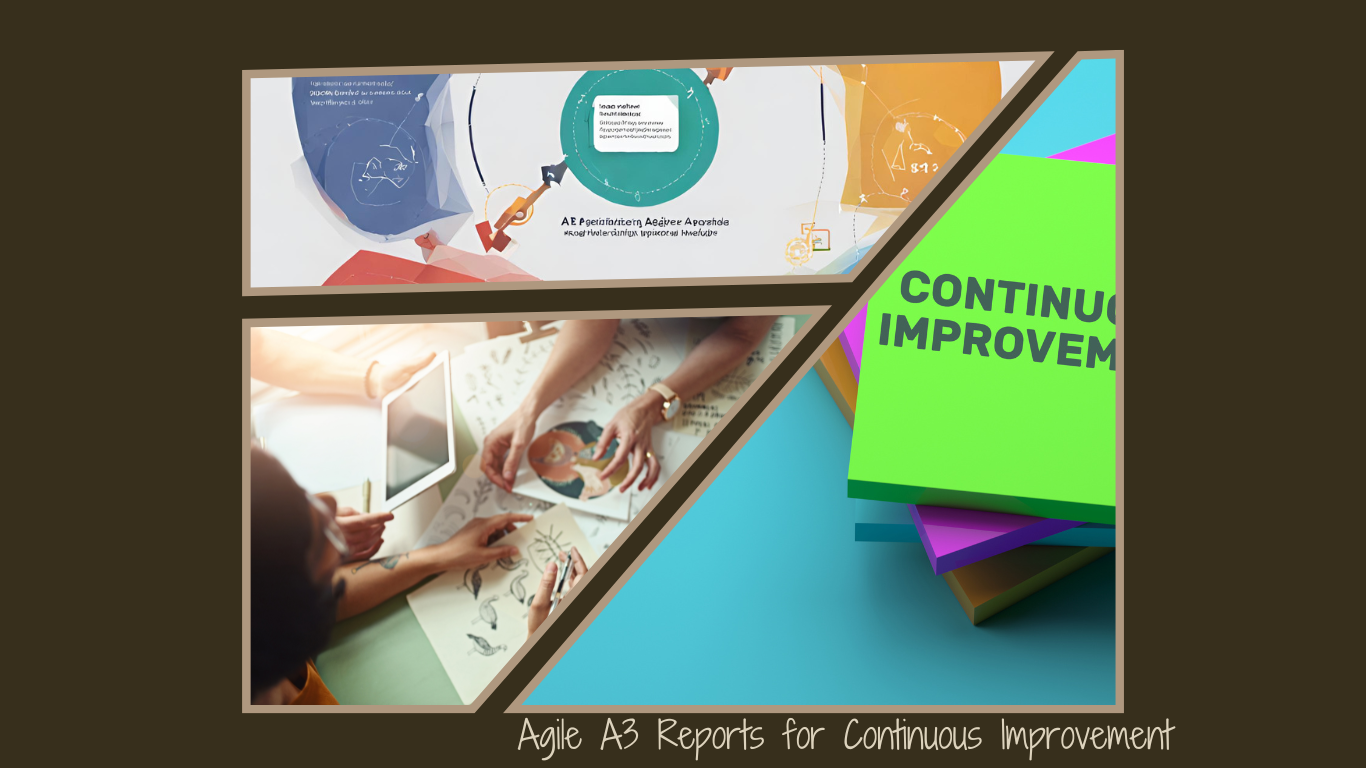
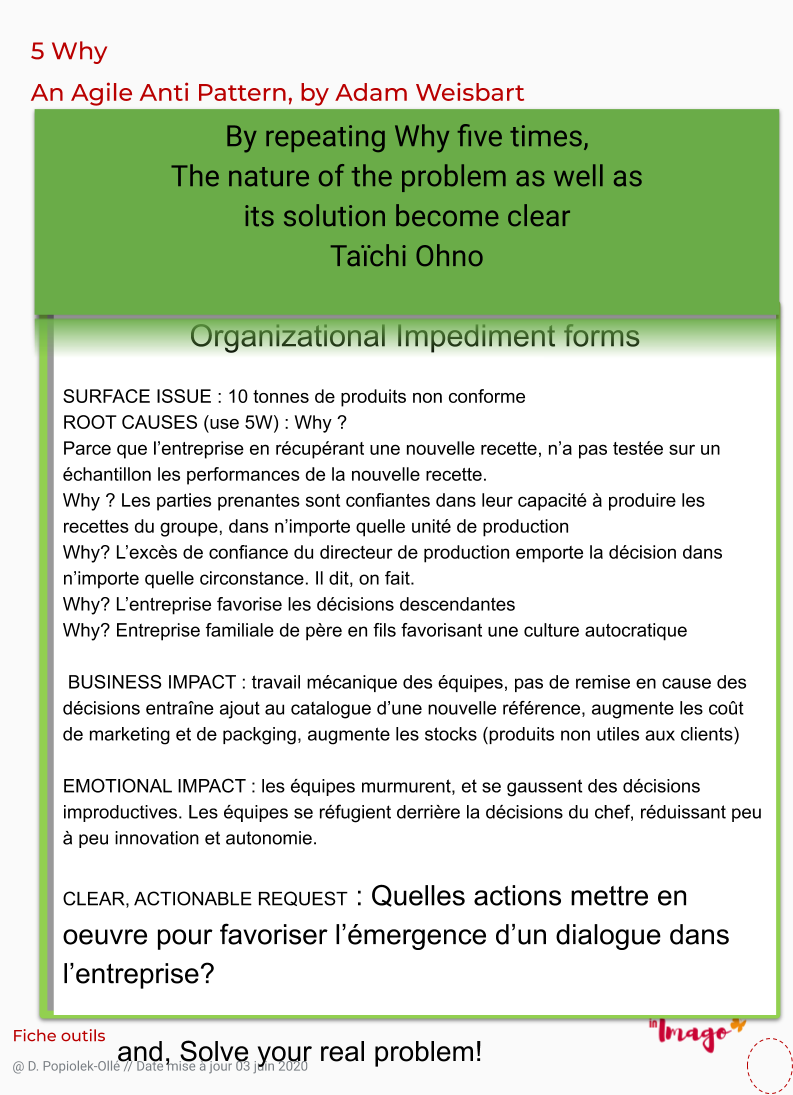 The “5 whys” revisited by Adam Weisbart brings this Lean tool back to the fore. The “5 whys” allow us to face our mistakes. They are a valuable problem-solving tool. …
The “5 whys” revisited by Adam Weisbart brings this Lean tool back to the fore. The “5 whys” allow us to face our mistakes. They are a valuable problem-solving tool. … 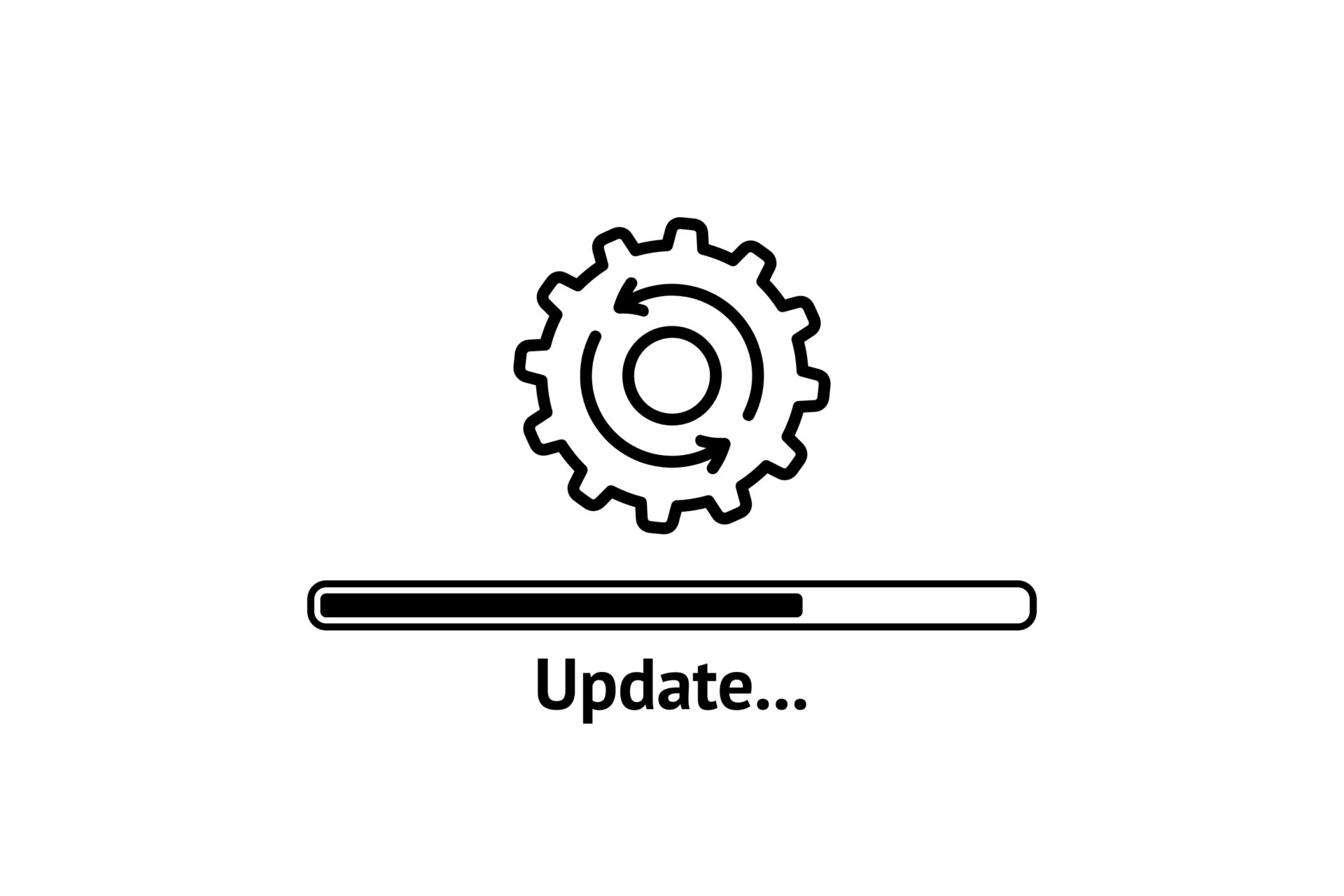 The 5 Whys is a questioning technique used to find the root causes of a problem. The number 5 just means that you have to ask the question why? enough …
The 5 Whys is a questioning technique used to find the root causes of a problem. The number 5 just means that you have to ask the question why? enough …